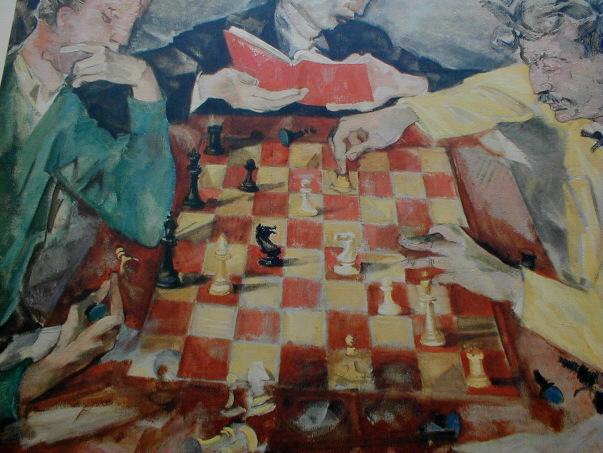Correct Methodology?
I've been thinking lately about what is the optimal approach to these tactical problems for long term retention. There certainly are a number of options. There are Extremes ie: 1) De Maza Method doing each problem in a large complete set before returning to do them again. 2) breaking them into smaller sets and repeating them in a much smaller time period. Why wouldn't doing a single problem 7 times at one sitting before moving to the next problem work? What extent does review of problems one finds more difficult play? What extent does a deeper understanding a position play as opposed to rote memorization? What does the role of effort attempting to solve a tactic play in improvement?
Anyway, I continue to follow the advice from my Sharpen your tactics book. Keep Moving!
Anyway, I continue to follow the advice from my Sharpen your tactics book. Keep Moving!


6 Comments:
At 8:58 AM, CelticDeath said…
CelticDeath said…
When I worked through 1001 Winning Chess Sacrifices and Combinations for my circles program, I broke the problem set into chapters and did 7 circles each on those chapters. This seemed to work fine, but I did run into problems after I did the last mini-circle set of 7 on the last theme group. This is because after I got done, I decided (and I'm glad I did) to do macro circles over the entire book. I found that I hadn't retained as well the earlier problems in the beginning of the program. They had faded from memory. I was able to overcome this, though, in the end.
At 3:41 PM, Blue Devil Knight said…
Blue Devil Knight said…
Ahh, the perennial questions about methodology....
When I felt like I wasn't retaining very well after doing 500-problem mini-circles (my mini-circle number is not set, but I go until I get 80% correct in the minicircle), so I changed it to 200 minicircles.
If you think about it, what is sacred about the (number of) problems in CT-Art level 2? Nobody has preselected that number of problems, at that difficulty level, to be optimal for your learning. Maybe you should do sub-circles of 100 problems each to 80%, to the end of L20, and then mini-circles of all of L20 until you hit 80%.
Or something...
At 3:44 PM, Blue Devil Knight said…
Blue Devil Knight said…
Umm, I said 200 minicircles, I meant 200 problems per minicircle...
I have not yet joined J'adoube's circles of death training camp.
:)
At 12:13 AM, King of the Spill said…
King of the Spill said…
I have been asking myself the same question. I suppose it's a trade-off between measurable incremental progress and longer term progress. Also, I think doing longer circles avoids some shallow memorization without any calculation phenomenon.
I have retention problems, too, so periodic review is part of my book mini-circles "after" program.
Even if my TCT "long" circle turns out better in the end, I did enjoy the feeling of progress I got with my earlier mini-circles. Mini-circles seem better when I am busy, too.
At 3:47 AM, takchess said…
takchess said…
Ah food for thought for a further post. I need to mull it over some more. What amazes me is I can do a problem get it wrong,see the solution and a minute later get it wrong again. I am now doing a subset of all the problems I got wrong earlier. I appreciate your thoughts!
At 10:15 AM, Blue Devil Knight said…
Blue Devil Knight said…
The most important factor for me is that I am still enjoying the training enough to stay motivated. If I'm not motivated, and I stop doing the circles, then I'm guaranteed to not learn the material :)
Takchess seems like one of the more motivated Knights....
Post a Comment
<< Home